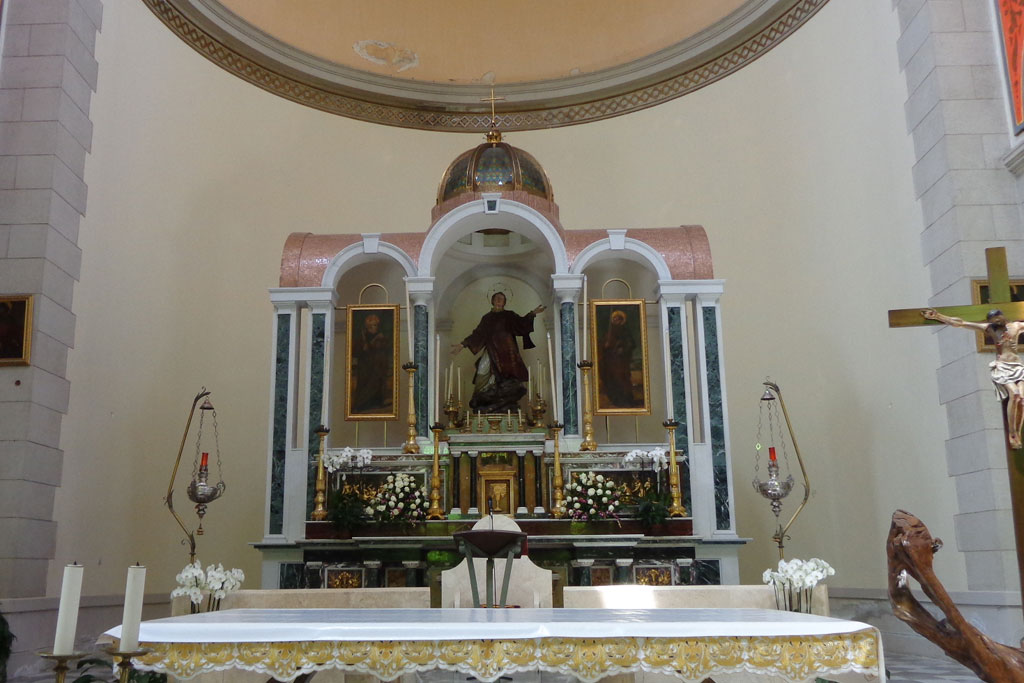This is followed by the painting dedicated to the Martyrdom of St Stephen (1729) by Letterio Paladino from Messina. The adjacent altar, dedicated to the Immaculate Heart of Mary, is from 1957. Then we find the painting of the SS. Martiri Milazzesi (victims, between 251 and 257, of the persecution carried out by Tertullus, governor of Sicily, by edict of the Emperor Decius), by an unknown artist, commissioned in 1622 by the Jurati for the old cathedral. Two other works by Scipione Manni are present inside the Mother Church: on the front wall of the transept, a canvas, the Madonna del Lume (1754), and the Paschal Veil, used during Holy Week.
The Renaissance baptismal font comes from the Old Cathedral, while the high altar is a neo-classical work from the late 18th century. Between 1991 and 1992, the structure behind it was built to house the statue of St Stephen, created in 1784 by sculptor Filippo Quattrocchi Romano and at the sides of which are two panels by Antonello de Saliba dated 1531: St Peter and St Paul.
In the presbytery are three more works by this artist, in the centre the Nativity and at the sides two small paintings representing St. Rocco and St. Thomas. Above is the Annunciation, attributed to the Messina painter Antonio Giuffrè, as well as, on the opposite side, the enthroned St. Nicholas and stories from his life (1485). In the polychrome and decorated coffered roof are two frescoes depicting episodes from the life of St Stephen Protomartyr. The eight medallions on the two walls of the nave depict: St. Stephen, St. Francis of Paola, the Milazzesi Martyrs, St. Leo II Pope, St. Gaetano, St. Anthony of Padua, Blessed Hannibal Mary of France and St. Eustochia Smeralda Calafato. The sacristy is furnished with 18th-century furniture, while the bell tower features five bells, four of which come from the Old Cathedral.
The Treasury consists of a gilded silver monstrance from the 1500s, probably donated by an English prelate at the time of Henry VIII Tudor, the reliquary of the arm of St. Stephen in silver and gilded silver from 1688, another reliquary in silver with the wood of the Holy Cross, two embossed silver crowns from the 17th century and the silver ray that adorns the head of St. Stephen on the solemnity.
